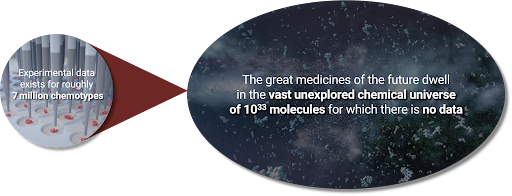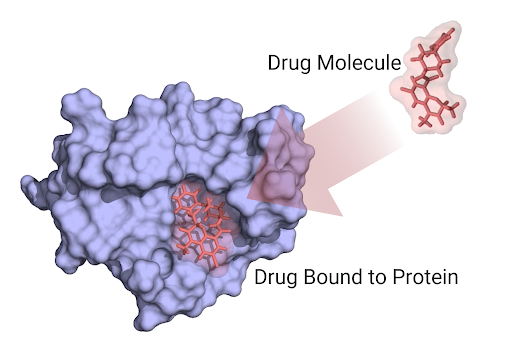Breaking the Bottleneck: How Verseon is Rewriting the Future of Drug Discovery Beyond Pharma's Limits
For over a century, the pharmaceutical industry has been bound by a paradox: billions of dollars are poured into research and development every year, yet effective treatments for too many of the world's most devastating diseases remain elusive. According to the research, only less than 10% of drugs entering clinical trials ever reach the market. This staggering inefficiency underscores why, despite remarkable advances in biology and medicine, most diseases still lack adequate treatments.
"Conventional drug discovery is fundamentally constrained," says Adityo Prakash, CEO and founder of Verseon. "The industry has been searching for answers in a small pool of chemicals synthesized over the course of the last 150 years. It's no wonder progress has been slow. We decided to break that bottleneck by starting from the ground up."
That bottleneck is a numbers game. Humanity has synthesized roughly seven million distinct drug-like compounds in modern history. It sounds impressive until compared to the decillion, 10 to the power of 33, possible drug-like molecules that could be created under the rules of chemistry. "What we have tested so far is like a few grains of sand, when entire beaches remain unexplored," Prakash explains. "It's impossible to brute-force our way through all the possibilities. The lifetime of the universe would end before we got anywhere."

This realization fueled Verseon's mission: to build a platform capable of designing new drugs not by trial and error, but by predicting how potential drug molecules would behave before they are ever made. The company's scientists spent nearly two decades developing what Prakash calls "CAD at the atomic level," computer-aided design tools that bring the rigor of physics, chemistry, and computation to medicine.

Unlike AI models that simply remix known data, Verseon's platform relies on first-principles physics to predict how novel molecules will bind to disease-causing proteins. Once designed in silico, promising compounds are synthesized and tested in the lab, creating a feedback loop that strengthens both their physics algorithms and their AI tools. The result is not incremental improvement; it's exponential.
"People have dreamed of designing drugs atom by atom since the 1980s," says Prakash. "But the complexity of modeling quantum interactions in biological systems was too overwhelming."
Solving this problem was no easy feat. Sangtae Kim, a renowned chemical engineering scientist, became Verseon's CTO after observing the company's scientific advances for more than a decade. He says, "Verseon's platform is comprised of significant new advances within multiple distinct branches of science. Each of these advances would be enthusiastically welcomed by the leading practitioners in their respective domains – but the collection of these advances is virtually unattainable by any other organization."
New equations and models that describe drug-protein binding with stunning accuracy and computer-directed drug molecule synthesis that provides "recipes" for making molecules that no one has ever made before are just a few examples.
"We're fortunate that we've had the team, talent, timing, inspiration, and luck to make the advances we've made," says Prakash. "It has also been a lot of hard work. We had to persevere for nearly 20 years, making all the necessary scientific advances to transform drug discovery."
This long-game approach has defied industry norms. Verseon's advances couldn't be accomplished within academia, where researchers need to publish constantly to survive. Neither did it fit the venture-capital model, where investors demand quick returns. Nor would a platform like Verseon's have emerged from established Big Pharma companies, whose obligation to demonstrate quarterly profits to shareholders limits their appetite for supporting greenfield research to rewrite the rules of drug discovery. As Robert W. Karr, the former head of R&D Strategy at Pfizer, points out, "Big Pharma is simply not set up culturally for an initiative like Verseon's." Instead, Verseon's development path has mirrored that of legendary projects during the mid-twentieth century at Bell Labs and Xerox PARC, where scientists could pursue fundamental breakthroughs without immediate commercial or grant-funding pressure.
Today, Verseon has a growing pipeline of 16 drug candidates across eight major disease areas, with multiple programs already entering clinical stages. Among them are safer blood thinners designed to prevent strokes and heart attacks without dangerous bleeding risks, oral drugs for diabetic vision loss that could save millions from blindness, and cancer therapies capable of defeating resistant tumors. Unlike Big Pharma's "one drug, one chance" gamble, Verseon's process consistently generates multiple candidates with uniquely desirable properties for every program.
"What excites me most is not just that we can make better drugs," Prakash says, "but that we can do it repeatedly, across disease after disease. That's what changes the future of medicine."
Verseon's unconventional history underscores its credibility. The company's team has a track record of creating technological breakthroughs. They brought the same creativity and persistence to pharmaceuticals, assembling a world-class team of physicists, chemists, AI experts, and biologists. Nobel laureates and former heads of top pharmaceutical companies now sit on Verseon's advisory board, not just as supporters but as investors.
In an industry often driven by hype cycles and short-term results, Verseon has deliberately chosen the harder path. That perseverance is starting to pay off. "We are proving that with persistent development of the right mix of technologies, the bottleneck of drug discovery can be broken," Prakash says. "And as that bottleneck breaks, the flood of new medicines will transform how humanity treats disease."
The story of Verseon is not just about science; it is about rewriting the rules of progress. After decades of slow, costly, and uncertain discovery, the pharmaceutical world may finally have found its breakthrough moment, born not from chance but from physics.
© Copyright IBTimes 2025. All rights reserved.





















